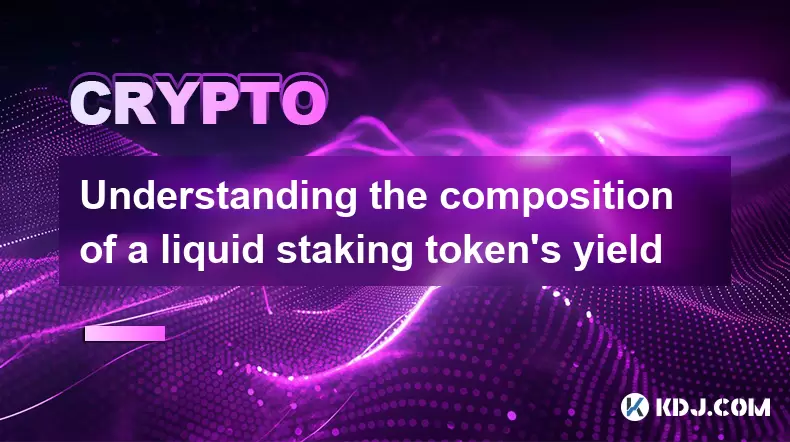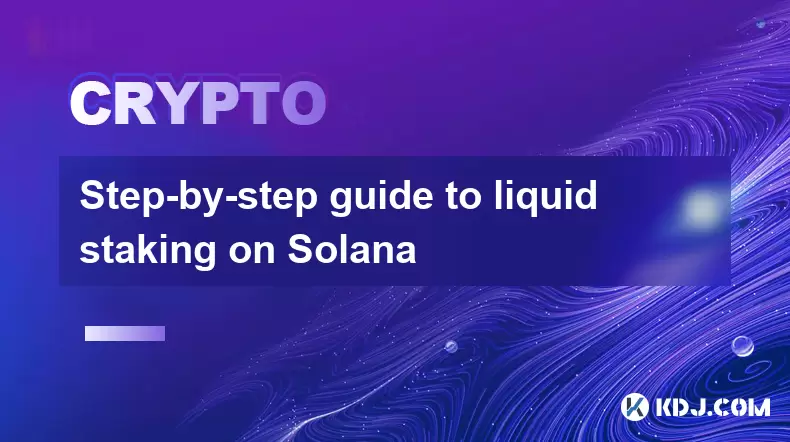-
 Bitcoin
Bitcoin $117400
-0.46% -
 Ethereum
Ethereum $3768
0.60% -
 XRP
XRP $3.551
2.09% -
 Tether USDt
Tether USDt $1.000
0.00% -
 Solana
Solana $203.2
11.30% -
 BNB
BNB $770.9
1.92% -
 USDC
USDC $0.9999
0.01% -
 Dogecoin
Dogecoin $0.2709
-0.02% -
 Cardano
Cardano $0.9024
4.49% -
 TRON
TRON $0.3139
0.60% -
 Hyperliquid
Hyperliquid $45.60
-1.41% -
 Stellar
Stellar $0.4730
-1.34% -
 Sui
Sui $4.025
2.15% -
 Chainlink
Chainlink $19.79
2.19% -
 Hedera
Hedera $0.2724
-2.39% -
 Avalanche
Avalanche $25.93
3.05% -
 Bitcoin Cash
Bitcoin Cash $524.0
-1.83% -
 Shiba Inu
Shiba Inu $0.00001558
0.50% -
 Litecoin
Litecoin $116.7
-0.30% -
 UNUS SED LEO
UNUS SED LEO $8.996
0.00% -
 Toncoin
Toncoin $3.334
1.83% -
 Polkadot
Polkadot $4.506
0.34% -
 Uniswap
Uniswap $10.99
4.83% -
 Ethena USDe
Ethena USDe $1.001
0.03% -
 Pepe
Pepe $0.00001461
3.17% -
 Monero
Monero $320.3
-1.01% -
 Bitget Token
Bitget Token $4.935
0.36% -
 Dai
Dai $0.9998
0.00% -
 Aave
Aave $322.4
-1.25% -
 Bittensor
Bittensor $455.6
9.33%
How to track my liquid staking portfolio
Liquid staking lets you earn rewards by staking crypto while keeping liquidity through tokens like stETH or rETH, which can be used in DeFi or tracked via wallets and analytics platforms.
Jul 22, 2025 at 01:21 pm

Understanding Liquid Staking and Its Portfolio Implications
Liquid staking has emerged as a popular mechanism in the cryptocurrency space, allowing users to stake their assets while maintaining liquidity through derivative tokens. When you stake tokens using a liquid staking protocol, you typically receive a tokenized version of your staked asset, such as stETH on Lido or rETH on Rocket Pool. These tokens can be traded, used in DeFi protocols, or held as part of a diversified portfolio.
Tracking your liquid staking portfolio involves monitoring not only the value of your derivative tokens but also the underlying staked assets and accrued rewards. This requires a combination of wallet tracking, DeFi analytics platforms, and sometimes direct interaction with smart contracts.
Important: Liquid staking introduces complexity due to the dual nature of your holdings—both the derivative token and its backing asset.
Using DeFi Analytics Platforms for Portfolio Tracking
Several DeFi analytics platforms offer comprehensive tracking of liquid staking positions. Platforms like DeFi Llama, Zerion, and CoinGecko provide integrated portfolio dashboards that can display liquid staking derivatives alongside other DeFi positions.
- Connect your wallet to the platform using tools like MetaMask or Trust Wallet
- Enable asset discovery to automatically detect staked tokens and their derivatives
- Review detailed breakdowns of yield, staking APR, and impermanent loss if applicable
These platforms often show the real-time value of your liquid staking tokens, their equivalent in the native staked asset, and the projected rewards over time.
Important: Always ensure that the platform supports the specific liquid staking protocol you are using to avoid incomplete data.
Monitoring Liquid Staking Derivatives on Blockchain Explorers
For more granular control and verification, blockchain explorers like Etherscan or Blockchair can be used to track your liquid staking portfolio. These tools allow you to inspect the balances of your derivative tokens and cross-check them with the underlying staked assets.
Steps to manually verify:
- Access your wallet address on the relevant blockchain explorer
- Check token balances for liquid staking derivatives such as stETH, rETH, or cbETH
- Review contract interactions to ensure that your tokens are correctly accounted for in the staking pool
- Use the "Read Contract" function to query staking rewards and withdrawal readiness if applicable
This method is particularly useful for advanced users or those who prefer not to rely on third-party platforms.
Important: Manual tracking via explorers ensures transparency but requires technical knowledge of smart contract functions.
Utilizing Wallet-Specific Tracking Features
Modern cryptocurrency wallets like Phantom, Trust Wallet, and MetaMask have integrated features to track staking positions, including liquid staking. These wallets often display the value of your staked assets, the equivalent in fiat, and the estimated rewards.
To track via wallet:
- Ensure the wallet supports the chain where your staking occurs (e.g., Ethereum, Solana)
- Add custom tokens if the derivative token is not auto-detected
- Enable staking analytics if the wallet offers a DeFi or staking dashboard
- Check reward accruals periodically to confirm that your position is performing as expected
Some wallets also integrate with liquid staking providers directly, offering one-click staking and tracking features.
Important: Wallet-based tracking is convenient but may lag behind real-time data from DeFi analytics platforms.
Engaging with Liquid Staking Protocol Interfaces
Each liquid staking protocol—such as Lido, Rocket Pool, or StakeWise—has its own interface where users can log in and view their positions in detail. These interfaces often provide:
- Real-time balance of staked tokens and derivatives
- Accrued rewards and estimated APR
- Historical staking activity
- Options to unstake or claim rewards
To use these interfaces:
- Visit the official website of the liquid staking provider
- Connect your wallet to the platform
- Navigate to the "My Staking" or "Portfolio" section
- Review detailed metrics including total value locked (TVL), slippage, and withdrawal timelines
These native dashboards are essential for users who want to stay updated on protocol-specific changes or reward structures.
Important: Protocol-specific dashboards offer the most accurate and detailed view of your liquid staking portfolio.
Frequently Asked Questions
Q: Can I track multiple liquid staking positions across different chains in one place?
Yes, platforms like Zerion, DeFi Llama, and CoinGecko support multi-chain tracking, allowing you to aggregate all your liquid staking positions in a single dashboard.
Q: What should I do if my staking rewards are not showing up?
First, ensure that you are using the correct wallet address and that the platform or wallet supports the specific protocol and chain. If the issue persists, check the protocol’s official dashboard or contact their support team.
Q: Are there any risks in tracking liquid staking portfolios through third-party platforms?
Third-party platforms may experience delays or inaccuracies in data aggregation. Always cross-verify critical information with your wallet or the protocol’s native interface to avoid misinterpretation.
Q: How do I know the value of my liquid staking token relative to the original asset?
Most DeFi analytics platforms and wallets display the exchange rate between the derivative token and the native asset. For example, Lido shows how much ETH one stETH is worth in real time.
Disclaimer:info@kdj.com
The information provided is not trading advice. kdj.com does not assume any responsibility for any investments made based on the information provided in this article. Cryptocurrencies are highly volatile and it is highly recommended that you invest with caution after thorough research!
If you believe that the content used on this website infringes your copyright, please contact us immediately (info@kdj.com) and we will delete it promptly.
- XRP, Bitcoin, Ripplecoin: Navigating the Crypto Landscape in 2025
- 2025-07-22 20:30:13
- Cardano Ecosystem Watch: Can PayFi Token Remittix Trigger an ADA Overtake?
- 2025-07-22 20:50:13
- JasmyCoin Price Forecast: Chart Analysis Points to Potential Surge
- 2025-07-22 20:55:13
- Remittix, XRP, and Dogecoin: What's Hot in the Crypto Game Right Now?
- 2025-07-22 20:10:14
- BlockchainFX, PEPE, and USDT: What's the Buzz in the Crypto Jungle?
- 2025-07-22 18:50:12
- Ripple's RLUSD: Institutional Backing Fuels Stablecoin Ascent
- 2025-07-22 18:30:12
Related knowledge

Understanding the composition of a liquid staking token's yield
Jul 20,2025 at 09:07am
What Is a Liquid Staking Token?A liquid staking token is a representative asset issued to users who stake their native cryptocurrency on a proof-of-st...

Is it better to stake directly or use a liquid staking service?
Jul 22,2025 at 08:21pm
Understanding the Basics of StakingStaking in the context of blockchain and cryptocurrency refers to the process of locking up digital assets to suppo...

What to do during an LST depeg event
Jul 20,2025 at 04:57pm
Understanding LST Depeg EventsAn LST (Liquid Staking Token) depeg event occurs when the token, which is typically pegged to the value of the underlyin...

Can you provide liquidity with liquid staking tokens?
Jul 22,2025 at 10:22am
Understanding Liquid Staking TokensLiquid staking tokens (LSTs) are derivative tokens that represent staked assets on a proof-of-stake (PoS) blockchai...

What are the best wallets for storing LSTs?
Jul 21,2025 at 03:14pm
Understanding LSTs and the Need for Secure StorageLSTs, or Liquid Staking Tokens, are derivative tokens representing staked assets on a blockchain. Wh...

Step-by-step guide to liquid staking on Solana
Jul 20,2025 at 06:42am
What is Liquid Staking on Solana?Liquid staking is a mechanism that allows users to stake their cryptocurrency while retaining liquidity through the i...

Understanding the composition of a liquid staking token's yield
Jul 20,2025 at 09:07am
What Is a Liquid Staking Token?A liquid staking token is a representative asset issued to users who stake their native cryptocurrency on a proof-of-st...

Is it better to stake directly or use a liquid staking service?
Jul 22,2025 at 08:21pm
Understanding the Basics of StakingStaking in the context of blockchain and cryptocurrency refers to the process of locking up digital assets to suppo...

What to do during an LST depeg event
Jul 20,2025 at 04:57pm
Understanding LST Depeg EventsAn LST (Liquid Staking Token) depeg event occurs when the token, which is typically pegged to the value of the underlyin...

Can you provide liquidity with liquid staking tokens?
Jul 22,2025 at 10:22am
Understanding Liquid Staking TokensLiquid staking tokens (LSTs) are derivative tokens that represent staked assets on a proof-of-stake (PoS) blockchai...

What are the best wallets for storing LSTs?
Jul 21,2025 at 03:14pm
Understanding LSTs and the Need for Secure StorageLSTs, or Liquid Staking Tokens, are derivative tokens representing staked assets on a blockchain. Wh...

Step-by-step guide to liquid staking on Solana
Jul 20,2025 at 06:42am
What is Liquid Staking on Solana?Liquid staking is a mechanism that allows users to stake their cryptocurrency while retaining liquidity through the i...
See all articles

























































































